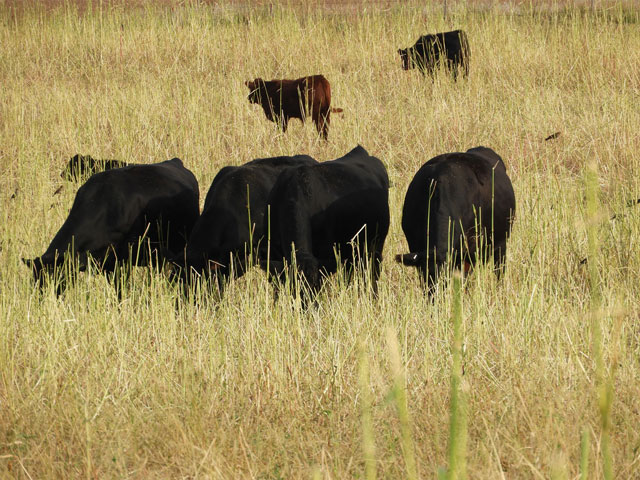Shared Resources
Grazing Exchanges Connect Producers and Landowners
Having the livestock available to graze down crop residues and covers isn't always feasible, even though the practice clearly comes with a long list of benefits, including keeping down wildfires.
"I've notice on several fires, including extreme fires, the fence lines where the fire just stopped. And the one variable, the one difference, was grazing," reported CAL FIRE Battalion Chief Marshall Turbeville.
With this in mind, the University of California Cooperative Extension launched Match.Graze, a program to connect California and South Dakota cattle producers over the need for grazing.
South Dakota's Nick Jorgensen, chief executive officer of Jorgensen Land and Cattle in Ideal, said grazing every possible acre allows his operation to increase soil organic matter by up to 0.75% per year, and cut fertilizer costs by $50 per acre, without yield loss. Grazing cattle on his crop and cover acres provides a double benefit, cutting feed and manure management costs by up to $2 per head per day.
P[L1] D[0x0] M[300x250] OOP[F] ADUNIT[] T[]
Match.Graze provides both South Dakota and California livestock producers an option for the coming season in terms of grazing management—whether the producer has livestock, is strictly a row crop producer or landowner. The map-based program helps find a grazing partner. That may mean, for example, a South Dakota farmer, who moved away from livestock to focus more on row crops, can still benefit from increased diversity by incorporating livestock onto his acreage, bringing the benefit of good soil health management. Or a California producer, without enough cattle of his own to graze down residue or covers, can see that benefit by pairing up with a South Dakota cattle producer.
"Every property is different and requires thoughtful consideration of how it should best be grazed," noted Stephanie Larson, director of UCCE in Sonoma, and co-creator of the livestock-land matchmaking service. "UC Cooperative Extension is here to serve. Put Match.Graze to work, and let's prevent catastrophic fire while helping landowners and agriculture."
MIDWEST GRAZING MATCH
Across the Midwestern states of Illinois, Indiana, Iowa, Minnesota, Missouri and Wisconsin, the Midwest Perennial Forage Working Group, is also helping livestock producers partner with others in ag to expand grazing reach while benefitting the land.
This free service, called the Midwest Grazing Exchange, helps integrate livestock onto the landscape, a win for soil, animals and overall profitability, says Meghan Filbert, livestock program manager at Practical Farmers of Iowa, who helped develop the website being used for the program.
"The Midwest Grazing Exchange is unique because it serves multiple states in the upper Midwest and expands beyond cover crop grazing. All grazing scenarios, including woodland and urban grazing, are represented. We want to unlock the plethora of benefits that come with well-managed grazing," says Filbert.
To learn more about these programs, or find a match, go to these websites:
www.midwestgrazingexchange.com
(c) Copyright 2020 DTN, LLC. All rights reserved.






